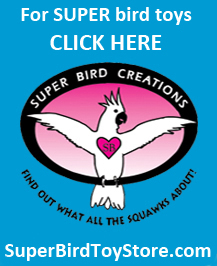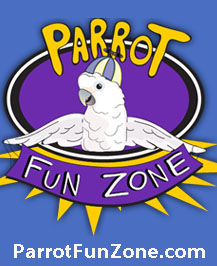Maintaining a Clean Environment
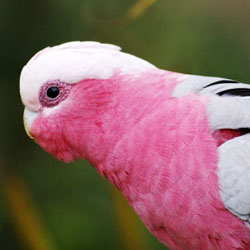 As conscientious parrot companions, it is our responsibility to maintain a clean, healthy environment for our birds so they are not exposed to infectious agents. Birds in the wild rarely come into contact with their feces! They remain high in the trees while their droppings fall to the ground. Unfortunately, caged birds have to live in close proximity to their droppings as they often land on toys, perches, food and water cups and cage grates.
As conscientious parrot companions, it is our responsibility to maintain a clean, healthy environment for our birds so they are not exposed to infectious agents. Birds in the wild rarely come into contact with their feces! They remain high in the trees while their droppings fall to the ground. Unfortunately, caged birds have to live in close proximity to their droppings as they often land on toys, perches, food and water cups and cage grates.
Probably most of us wish we could just tell our birds to "CLEAN YOUR ROOM!" Unfortunately, it is up to us to not only clean their "personal space" but, also to scrub the food stuck on the walls, the poop off of the floor, the seed hulls stuck in the floor boards, the feathers in the heating vents....you get the picture. Keeping up with the mess is a seemingly never ending chore.
Fortunately, there are many bird safe cleaning products and accessories available that, when combined with a routine cleaning schedule, will make this thankless job more manageable.
Recommended Cage Cleaning Routine
Daily
- Change cage liner to remove droppings and spoiled foods and minimize opportunity for bacterial and mold growth.
- Wash food and water bowls with hot soapy water.
- Perform a quick wipe of the cage surface with a damp cloth.
Weekly
- Remove grate and tray and scrub them in a washtub with hot soapy water and disinfect them with a bird safe cleaner.
- Scrape droppings off perches and toys.
- Sanitize the water and food bowls in the dishwasher.
- During the cleaning process, inspect toys and cage for potential safety issues.
Quarterly
- Take the cage outside and thoroughly scrub the cage from top to bottom including all the nooks and crannies.
- Wipe down all of the surfaces to remove water and let the cage air dry in the sun.
If left to dry, fecal matter can easily become airborne contaminates which can be inhaled by your parrot as well as yourself.
Helpful Cleaning Hints
- Keep moistened wipes on hand to clean poop before it dries
- Pre-soak dried on poop to make it easier to wipe off
- Place washable floor mats under all cages to protect your flooring.
- Have an extra set of food and water dishes available.
- Buy custom pre-cut cage bottom liners & stack several in the cage bottom so you can quickly remove the top soiled layer & have a fresh one automatically in place.
- Install an electronic air filtration system to cut down on dust and dander buildup.
- A few minutes spent daily on cleaning tasks will reduce the mess and time required for weekend chores.
- Hang sheets or use washable paint to protect the walls behind your bird's cage.
- Use a scraper to clean off perches and cage bars.
- Use seed guards and cage skirts to minimize fallout from the cage.
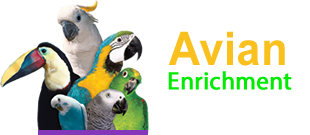

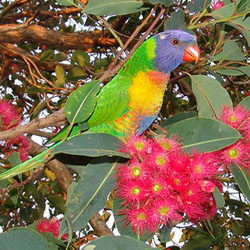 In the wild, the sun dictates not only the seasons but also the biological cycles of birds. The length of the day influences when your bird will molt, breed and migrate amongst other things. Our parrots need to experience the same light and dark cycles as their cousins in the wild.
In the wild, the sun dictates not only the seasons but also the biological cycles of birds. The length of the day influences when your bird will molt, breed and migrate amongst other things. Our parrots need to experience the same light and dark cycles as their cousins in the wild.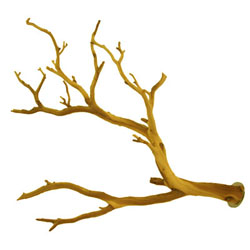 When deciding where to place perches consider the following:
When deciding where to place perches consider the following: In the wild, parrots have an infinite space within which to climb, hang, reach, interact, play and check out what's going on in the neighborhood. They don't have to deal with cumbersome bars limiting their movements and blocking their view. Clearly, we can't give full reign to our pet birds in our homes, if only for their own safety. However, there are many times when we would like to expand our bird's world and have them participate in family activities in other rooms of the house.
In the wild, parrots have an infinite space within which to climb, hang, reach, interact, play and check out what's going on in the neighborhood. They don't have to deal with cumbersome bars limiting their movements and blocking their view. Clearly, we can't give full reign to our pet birds in our homes, if only for their own safety. However, there are many times when we would like to expand our bird's world and have them participate in family activities in other rooms of the house. Wild parrots are native to tropical and subtropical climates where temperatures generally range from 70-95 °F with humidity levels running 77-88%. In the wild, parrots can take action to regulate their temperature as needed by moving into the shade of leaves or into sunny clearings. Domestic parrots however, rely mainly on their human companions to regulate the temperature in their environment.
Wild parrots are native to tropical and subtropical climates where temperatures generally range from 70-95 °F with humidity levels running 77-88%. In the wild, parrots can take action to regulate their temperature as needed by moving into the shade of leaves or into sunny clearings. Domestic parrots however, rely mainly on their human companions to regulate the temperature in their environment.